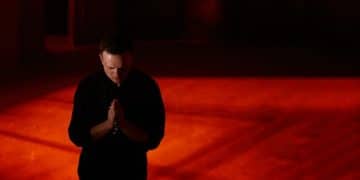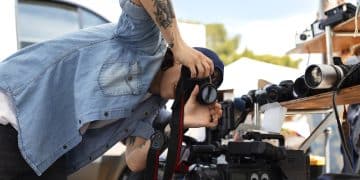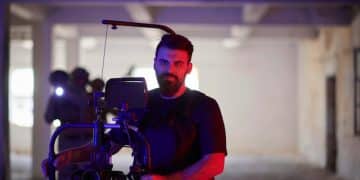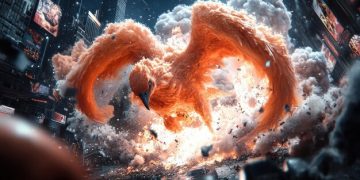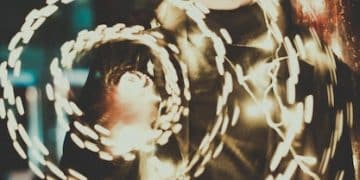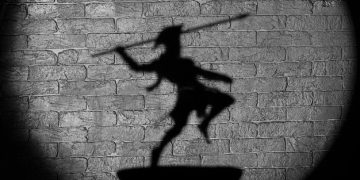Behind the Scenes: The Year’s Biggest Thriller Secrets Revealed
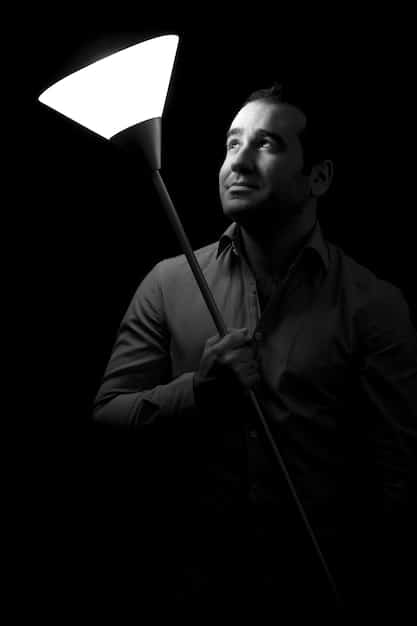
Behind the Scenes: Uncover Secrets from the Year’s Most Talked-About Thriller offers an exclusive peek into the making of this cinematic masterpiece, revealing the dedication, innovative techniques, and unexpected challenges faced by the cast and crew.
Step into the shadows and unveil the mysteries surrounding this year’s most gripping film with behind the scenes: uncover secrets from the year’s most talked-about thriller. Get ready to discover the intricate details and hidden stories that brought this cinematic sensation to life.
Lights, Camera, Secrets: The Genesis of a Thriller
Every movie has a story, but the real magic often happens behind the camera. This section delves into the initial stages of the thriller’s creation, from the spark of an idea to the green light for production.
From Script to Screenplay: Crafting the Narrative
The journey of a film often begins with a simple question: What if? This thriller was no exception. Let’s explore how the screenplay evolved and the initial challenges faced by the writers.
The screenplay underwent several revisions, each refining the intricate plot and deepening the characters’ motivations. The writers aimed to create a story that would keep audiences guessing until the very end.
Casting the Perfect Ensemble: Finding the Right Faces
Casting is crucial. The actors bring the written words to life, embodying characters the audience can connect with. Here’s how the casting director sought out the perfect talent.
The filmmakers sought actors with both talent and dedication. Many of the cast members underwent extensive training and research to fully embody their roles.
- Extensive audition process to find actors who could portray the complex emotions of their characters.
- Chemistry reads to ensure the ensemble cast worked well together on screen.
- Physical and mental preparation by the actors, including method acting techniques and consultations with professionals.
The initial budget for the film was ambitious, but the producers worked tirelessly to secure funding from various sources, including private investors and film studios. The financial backing allowed them to bring their vision to life on a grand scale.
This section covers the complex preliminary work, the essential artistic choices, plus the financial groundwork required to turn a concept into a tangible production. It reflects commitment from all involved to bring storytelling to life.
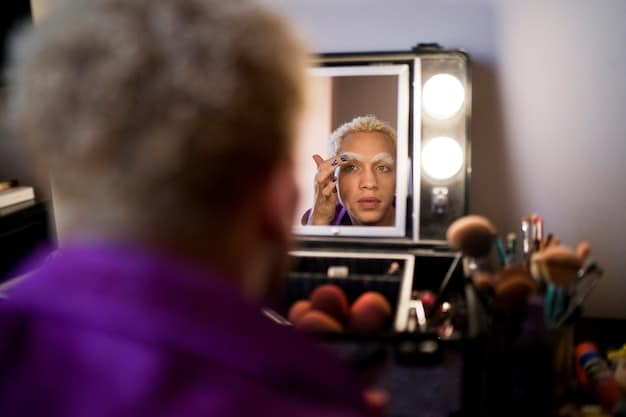
Creating the Atmosphere: Set Design and Cinematography
A thriller’s atmosphere is everything. The set design and cinematography are pivotal in creating suspense and immersing the audience in the story. This section explores how these elements were meticulously crafted.
Building Worlds: The Art of Set Design
The sets are more than just backdrops; they are integral to the narrative. Designers faced the challenge of creating spaces that were both realistic and filled with a sense of unease.
The set designers paid attention to every detail, from the furniture to the wall decor, to create a cohesive and believable world that mirrors the narrative.
Capturing Shadows: Cinematography Techniques
The art of cinematography is shaping the visual narrative. Find out how cinematographers used the perfect mix of shadows, lighting, and camera movement.
The careful choices enhance the storytelling, making the audience feel the tension and fear experienced by the characters.
- Use of low-key lighting to create a sense of mystery and foreboding
- Dynamic camera angles to heighten tension and disorientation
- Color palettes that reflect the mood of the scene, often favoring muted tones and stark contrasts
The filming locations were carefully chosen to reflect the tone and atmosphere of the story. The filmmakers scouted abandoned buildings, remote forests, and eerie landscapes to find the perfect backdrops.
In this section, we explored how the visuals and environment contribute to the feeling of suspense central to the nature of a thriller. The combination of creative and practical decisions are essential for achieving a realistic emotional impact.
Directing the Tension: The Director’s Vision
The director is the conductor of the cinematic orchestra. The director shapes the overall vision and ensures that every element works in harmony to create a cohesive and compelling story.
Guiding the Actors: Performance and Emotion
A director’s first job is helping actors provide genuine emotion. Understanding how the story impacts the person is critical to a good performance.
The director fostered a collaborative environment on set, encouraging the actors to contribute their own ideas and interpretations to their roles.
Pacing and Rhythm: Building Suspense
The pacing of a thriller is critical to keeping the audience engaged. Suspense is created by how fast or slow the information is given.
The director used techniques such as slow-motion, quick cuts, and lingering shots to manipulate time and heighten tension.
- Strategic use of jump scares to startle the audience
- Prolonged scenes of silence to build anticipation
- Sudden bursts of action to disrupt the calm and keep viewers on edge
Maintaining momentum throughout the film requires careful planning and execution. The director worked closely with the editor to ensure that the film’s rhythm supported the thriller’s suspenseful nature, maintaining pace in moments of action and slowing tempo during tense lulls.
This section provides insight into maintaining an effective narrative tone – finding emotional high marks and low marks and crafting appropriate timing into this emotional journey.
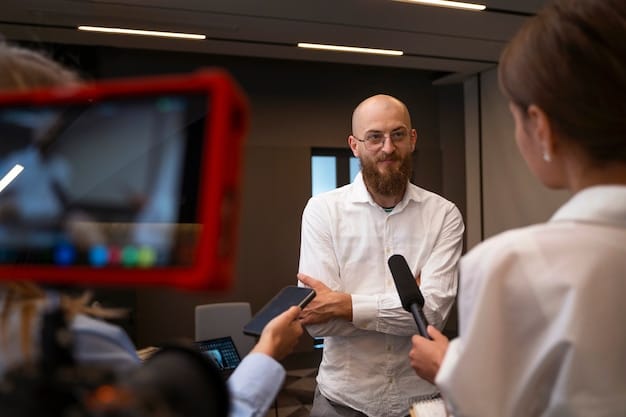
Overcoming Hurdles: Challenges During Production
No film production is without its challenges. This section delves into some of the unexpected obstacles and how the crew overcame them to bring the thriller to life.
Weathering the Storm: Dealing with Unpredictable Conditions
Weather can be a film’s best friend or worst enemy. Production frequently has to adapt to abrupt changes. The team faced several weather-related challenges during filming, including unexpected rainstorms and extreme temperatures.
To minimize delays, the production team implemented a flexible filming schedule that allowed them to shoot indoor scenes during inclement weather.
Technical Difficulties: Solving On-Set Issues
Modern filmmaking relies on complex technology prone to mistakes and failures. The crew encountered issues with equipment malfunctions and technical glitches.
The film crew was trained to handle a wide range of technical issues, and they worked together to find innovative solutions.
- Backup equipment readily available to minimize downtime
- On-site technicians to troubleshoot and repair any technical issues
- Creative problem-solving to find alternative solutions when equipment failed
Maintaining morale during long, demanding shoots is essential for project success. The production team organized team-building events and activities to foster camaraderie and boost morale.
This encapsulates challenges any film production faces, and dealing with the unpredictable is a test of the team, their strength and their skills.
Sound and Fury: The Role of Music and Sound Design
Sound is just as important as image. In a thriller, music and sound design are essential in creating a feeling of mystery. This section explores how these elements were used to heighten tension.
Composing Tension: The Score’s Impact
A score can amplify emotion. Discover how the composer created a score that enhanced the film’s suspenseful tone.
The composer worked closely with the director to ensure that the score complemented the visuals and enhanced the emotional impact of each scene.
Creating Unease: The Soundscape
The film’s sound designers built an aural environment that put listeners on edge. Creating unease in the sounds is the point.
Subtle sounds are sometimes the most compelling. Environmental and unnatural sounds were implemented in pivotal moments, adding layers to the experience.
- Using silence to amplify tension before sudden bursts of noise
- Incorporating subtle environmental sounds to create a sense of realism
- Manipulating sound frequencies to evoke unease and discomfort
The mixing of audio elements is a crucial step in post-production, where the various sounds are balanced to create a cohesive sonic experience. The sound mixers carefully adjusted the levels of dialogue, music, and sound effects to ensure clarity and emotional impact.
This section touches on the aural dimensions of the film. Music is emotional and deliberate to create specific feelings.
The Final Cut: Post-Production and Editing
The raw footage is molded into a movie in post-production. This stage shapes the story and adds finishing touches. The editor worked to shape the raw footage into a cohesive and compelling story.
Weaving the Narrative: The Art of Editing
Careful choices can increase the impact of edits. Learn how scene orders and pacing affected the movie’s impact. This involved sifting through hours of footage to select the best takes and assemble them in a way that optimized the narrative flow.
Creative experimentation is central. The editor tried different approaches to finding the optimal sequence for the project.
Adding the Polish: Visual Effects and Color Grading
Visual effects enhance the film with the use of lighting and colors. These details elevate the film and add visual appeal.
The visual effects artists delivered realistic additions to scenes that helped maintain the emotional experience.
- Enhancing practical effects with digital enhancements to intensify their impact
- Seamlessly integrating CGI elements to create stunning visual sequences
- Fine-tuning colors to evoke specific moods and enhance the overall cinematic appeal
Preparing for distribution requires attention to detail. The post-production team created different versions for theaters, streaming, and home video. This involved optimizing the audio and video quality for different playback devices and ensuring compliance with various technical standards.
This section explores the last creative process, as the product gets ready for showing.
| Key Insight | Brief Description |
|---|---|
| 🎬 Script Evolution | Multiple revisions refined plot and characters. |
| 💡 Set Design | Sets created to be realistic and unsettling. |
| 🌧️ Weather Woes | Flexible schedules helped manage weather delays. |
| 🔊 Sound Design | Subtle sounds enhanced tension in key moments. |
[FAQ Section]
▼
The underwater escape scene was the most challenging due to safety concerns and technical requirements. It required meticulous planning.
▼
Actors underwent extensive training, research, and consultations with professionals to fully embody their characters and connect with their roles.
▼
Primary filming locations included abandoned buildings, remote forests, and eerie landscapes to provide an authentic and unsettling atmosphere.
▼
The score was carefully composed to enhance the film’s suspenseful tone. This was done by complementing intense scenes with a carefully curated composition.
▼
The post-production process included editing, visual effects, color grading, and sound mixing to create the final product from the original clips and shots.
Conclusion
Delving into the production’s layers reveals incredible complexity. Each stage presents significant challenges, resolved through collaboration and ingenuity. This insider’s view respects those who breathed life into this thriller, ensuring thrills for audiences worldwide.
